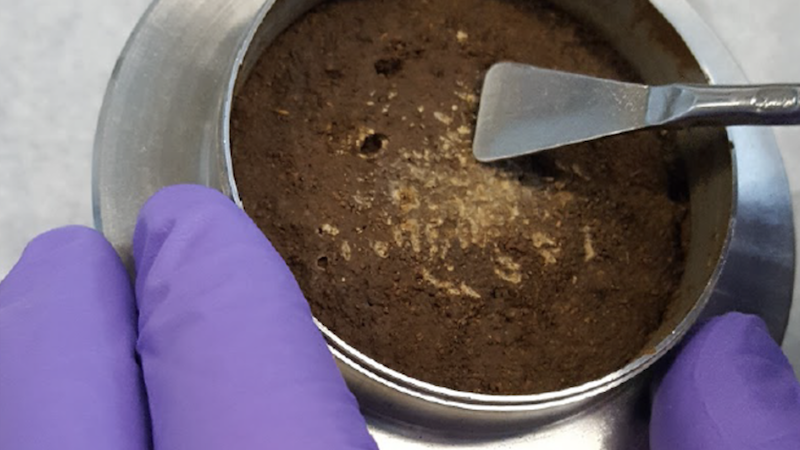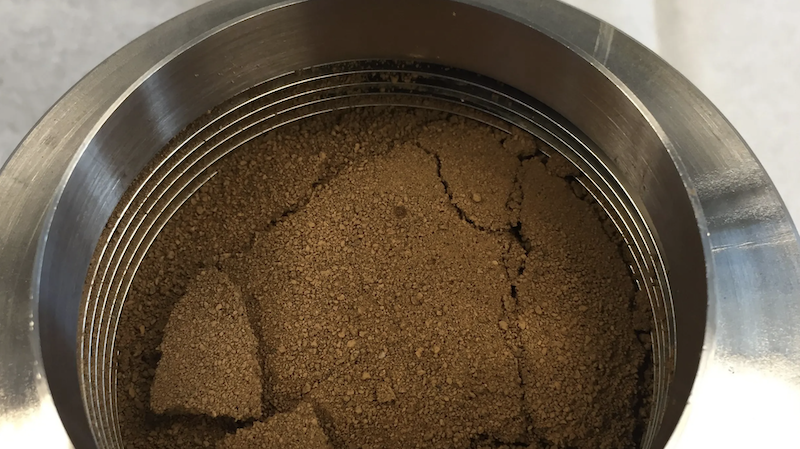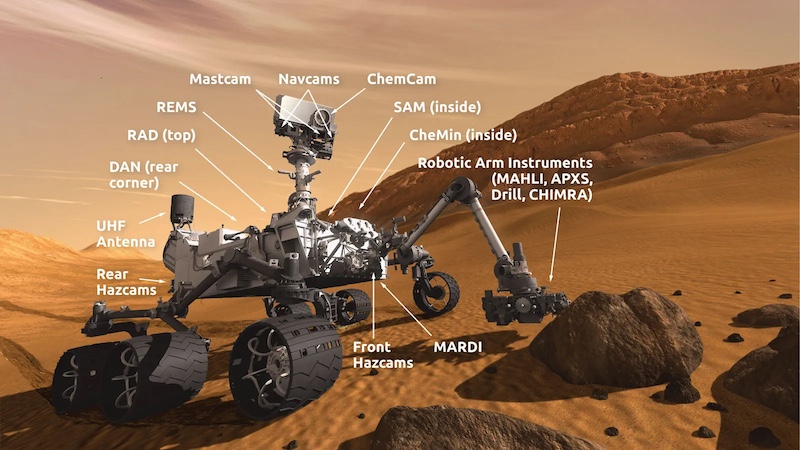
- On Earth, methane mostly has a biological origin. On Mars, methane has only been discovered in Gale crater, and its origins are unknown.
- The Curiosity rover on Mars found strange bursts of methane seeping from the ground.
- A new experiment at NASA’s Goddard Space Flight Center shows the methane likely trapped beneath a crust of salt. The methane seeps out when temperatures warm. Or, it might even be Curiosity rover breaking the crust and releasing the methane.
The strange tale of methane on Mars
The NASA Curiosity rover’s explorations of Gale crater on Mars revealed strange behavior of methane seeping from the ground. On Earth, biological processes produce most methane. The origin of methane on Mars is still unclear. On April 22, 2024, researchers said they may have an explanation for the odd bursts of methane from the crater. It may seep out as temperature rises, or it may even be due to the weight of the rover itself. But its origins are still a mystery.
We haven’t found signs of methane anywhere else on Mars. In Gale crater, the methane is trapped beneath frozen, solidified salt in the regolith, the top layer of smashed rock and dust. Scientists think the methane could seep out from under the salty crust when the temperature rises. The rising temperatures could either be during warmer parts of the day or warmer seasons. On the other hand, the methane release could also happen when the weight of the passing rover breaks the salt seal beneath its wheels.
The research team published their peer-reviewed results in the AGU journal JGR Planets on March 9, 2024.
Mysterious methane on Mars
Methane in Gale crater exhibits unusual behavior. It appears at night and then disappears during the day. The levels also fluctuate significantly, both during the day and seasonally. Sometimes it spikes to 40 times its usual background levels. And, despite all the seeping, it doesn’t seem to accumulate in the atmosphere beyond trace levels at most. But why?
It’s still a mystery. As Ashwin Vasavada, Curiosity’s project scientist at NASA’s Jet Propulsion Laboratory in California, said:
It’s a story with a lot of plot twists.
Is the methane hiding under solidified salt?
The new study doesn’t focus so much on how the methane itself is produced, but rather how it gets released to the surface. What causes the methane to seep out? The new research suggests salt may hold the answer. Not just any salt, but perchlorate specifically. Scientists already know this type of salt is widespread on Mars.
Led by Alexander Pavlov, a planetary scientist at NASA’s Goddard Space Flight Center in Greenbelt, Maryland, the researchers created simulated permafrost with various concentrations of perchlorate. Then, they exposed the samples to different temperatures and air pressures. Lastly, they injected neon – an analog for methane – into the frozen soil. In the experiments, a hard seal of solidified salt formed. This occurred in three to 13 days, but only in samples containing 5 to 10% perchlorate. The pressure of the gas below the salt layer was also higher, meaning the methane was trapped below the salt.
The tests were based on previous observations from 2017. Those tests involved growing microbes in simulated martian permafrost. When the salty ice sublimated – changed directly from a solid to a gas – during warmer temperatures, it left behind a hard crust of salt. That inspired the new experiments. Pavlov said:
We didn’t think much of it at the moment. That’s when it clicked in my mind.

How methane seeps out of the ground
So how does the methane seep out into the atmosphere? The researchers explained how the salt could be the answer for why the methane seeps when it does. When the temperature is a bit warmer, during the day or in warmer seasons, the salty ice would start to sublimate. This would weaken the hard salty seal in the frozen ground, allowing trapped methane to escape. Another intriguing possibility is that the weight of the rover itself could even break the seals as it travels over the landscape.
The researchers note the amounts of perchlorate they added to the experiments are higher than what is in the regolith in Gale crater. That regolith, however, is rich in another kind of salt called sulfate. So now, the research team will experiment with sulfate to see if it will form similar salty crusts.
Curiosity can only sniff for methane periodically with its Sample Analysis at Mars (SAM) onboard laboratory, since its instruments are needed for other tasks most of the time. As Charles Malespin, principal investigator for SAM at Goddard, noted:
Methane experiments are resource intensive, so we have to be very strategic when we decide to do them.

Methane on Mars: Geological or biological?
We don’t know yet if the methane on Mars is geological or biological in origin. At Gale crater, it appears to be produced underground where it’s trapped under the salt crusts. Curiosity will need to do more sampling for us to learn more. Even then, we may need to wait for future spacecraft or rovers with specialized instruments. Ideally, the methane should be measured in multiple locations on Mars. Vasavada said:
Some of the methane work will have to be left to future surface spacecraft that are more focused on answering these specific questions.
Bottom line: New experiments show that methane on Mars, in Gale crater, may seep out of the ground when hard crusts of perchlorate salt temporarily warm up and weaken.











